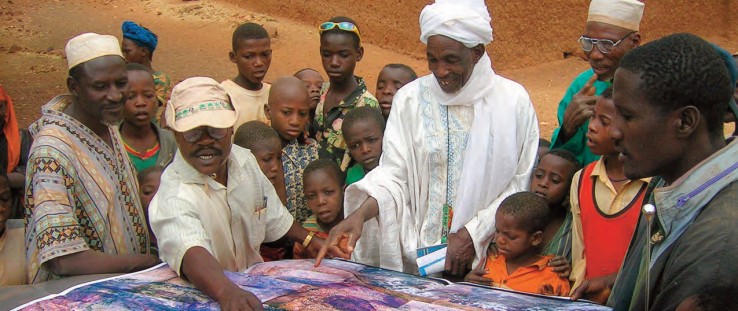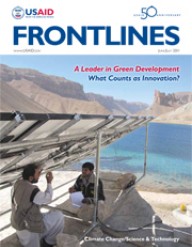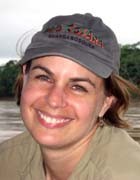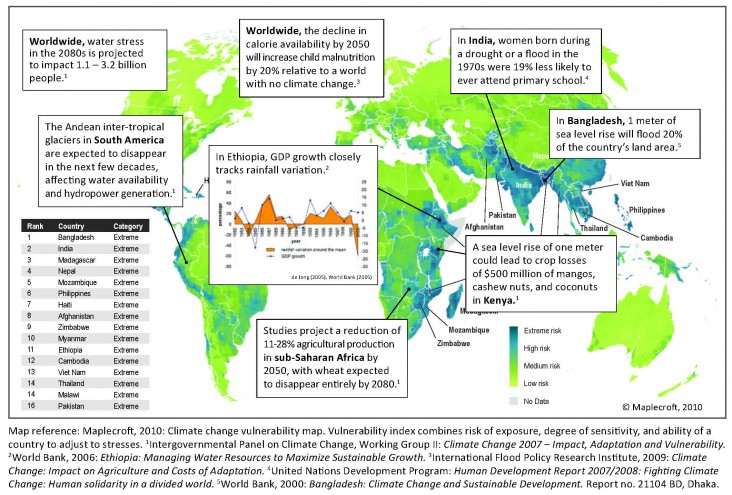

Climate change is one of the greatest challenges of our generation. The poor in developing countries will likely be the first and hardest hit by climate change impacts because they are heavily dependent on climate-sensitive economic activities such as agriculture, fisheries, forestry, and tourism, and lack capacity to cope with economic and environmental shocks.
With more than a billion people at risk of increased water stress, and hundreds of millions at risk of sea-level rise, USAID, as part of the president’s Global Climate Change Initiative, has crafted a comprehensive response—to alleviate unnecessary suffering, to seize opportunities provided by “green” growth, and to promote greater environmental stability on the planet.
Essentially, the Agency’s first comprehensive strategy for climate change and development is a way to integrate climate change into the Agency’s work in the regions and sectors most likely to be impacted.
Through the strategy, the U.S. Government is expanding opportunities to support clean and climate-resilient economic growth through innovation and investments with long-lasting environmental and development co-benefits. It is supporting countries as they build resilience to the impacts of climate change and move towards a less fossil fuel-dependent economy.
At its core, the strategy is built on the premise that sound development is central to meeting the climate change challenge and will lead to more stable and prosperous futures for our partners.
One of the Future’s Great Challenges
Climate change is not felt uniformly. Rather, current research finds that its impacts will vary by region. Melting glaciers are leading to rising sea levels that could eventually render some densely-populated coastal areas uninhabitable. Extreme weather events including floods, droughts, heat waves, forest fires, sandstorms, and mudslides—which today affect several hundred million people—are predicted to become more frequent and more intense. Agricultural productivity is predicted to decline on some continents, especially Africa and South Asia, at a time of rapidly-growing demand for food, threatening the success of USAID’s food security investments.
By 2050, the combined climate impacts of warming and acidification (the gradual decrease in the pH of the Earth’s oceans, caused by their uptake of carbon dioxide from the atmosphere) on oceans is projected to result in classification of nearly all coral reefs as threatened, impacting reef fisheries and the roughly 500 million people for whom reef ecosystems provide crucial protein.
If we are unable to meet such challenges, climate change could jeopardize many of the development gains the international community and the U.S. Government have worked for many decades to secure.
A Strategy Unfolds
The Agency’s Climate Change and Development Strategy was created to try to ensure that the potentially devastating effects of climate change can be mitigated, and that the countries where we work build up their resilience to unavoidable negative impacts. The process has not been taken lightly.
For the past nine months, I have chaired a small Policy Task Team (PTT) that has worked to articulate USAID’s objectives and priorities in this area. Members of the PTT were selected for their areas of expertise, including in clean energy, adaptation to climate impacts, and reduction in greenhouse gas emissions from forests and other lands. They come from a diverse array of bureaus and offices and represent a true cross-section of the Agency.
As the team began to define the desired scope and priorities for the Agency’s work, it soon became clear that a “dual-track” approach was needed. First, the strategy had to include strategic objectives for USAID’s dedicated programs in the two primary areas of climate change work—mitigation of greenhouse gas emissions and adaptation to climate change impacts.
Second, and equally important, it had to promote the integration of climate change considerations into USAID’s development work broadly. Taking climate change into account is simply good practice. Core development programs can build climate resilience and favor lower-emissions approaches, especially in “climate-sensitive” sectors such as agriculture, forestry, energy, water, health, and disaster management.
For example, in the agriculture sector, analysis of weather and climate data drive good practices and good decision making, including crop selection; ensuring sufficient water is available at the right time; designing infrastructure that provides reliable access to markets; and evaluating import and export balances.
From Paper to the Field
As of early July, the draft strategy is nearing its final stage. It has gone through a number of expert consultations, followed by a rigorous interagency comment process, and will soon be presented to USAID Administrator Rajiv Shah for his approval.
But nine months from when it began, the process of truly integrating climate into USAID’s work is just beginning. Broad and effective integration will require new training for officers, practical tools to enable field staff to design and implement programs, and the development of best practices based on testing approaches and learning from these experiences.
USAID’s new Climate Change and Development Strategy recognizes that climate change is not its own sector. It must not treat the issue as an environmental problem to be dealt with only by climate scientists, while the work of the rest of the Agency continues without regard to its impacts. Instead, through this strategy, the Agency is seizing a course of action that will fundamentally change the way USAID does business.
In keeping with USAID Forward, the Agency’s reform agenda, the strategy explicitly recognizes the need to maximize learning from USAID’s climate change investments so that the Agency can develop a robust set of practices for the integration of climate change considerations across the development portfolio. By the end of this strategy, these practices will be mainstreamed into USAID’s approach to development through a variety of changes to program design, policy, strategic planning, and training.
Julie L. Kunen is senior adviser and chief of staff in USAID's Bureau of Policy, Planning, and Learning.











Comment
Make a general inquiry or suggest an improvement.